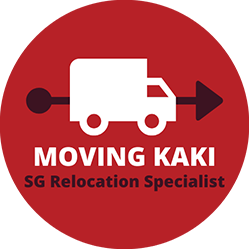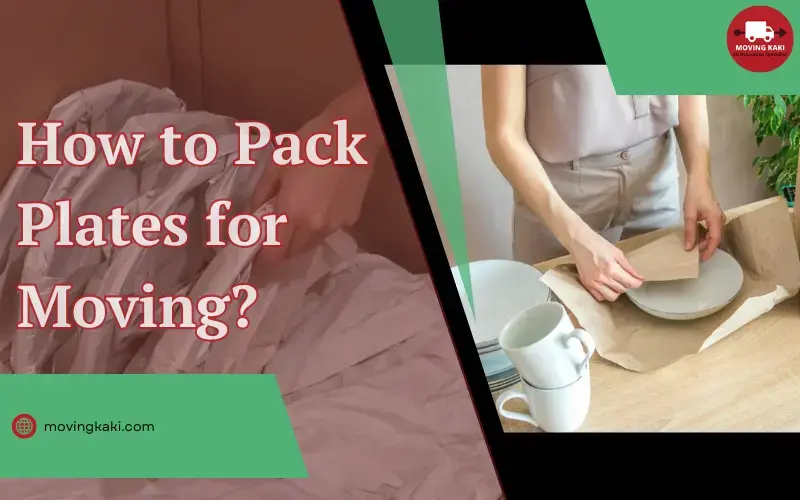Packing plates for a move may seem easy, but even a small mistake can result in them being cracked or completely shattered. Plates are one of the most fragile items to pack, and without proper protection, they can easily break during transit.
But with the proper packing techniques, you can protect your plates and transfer them to your new home without scratches. To make the process easier for you, we’ve put together a step-by-step guide on how to pack plates for moving and keep them secure throughout the moving journey.
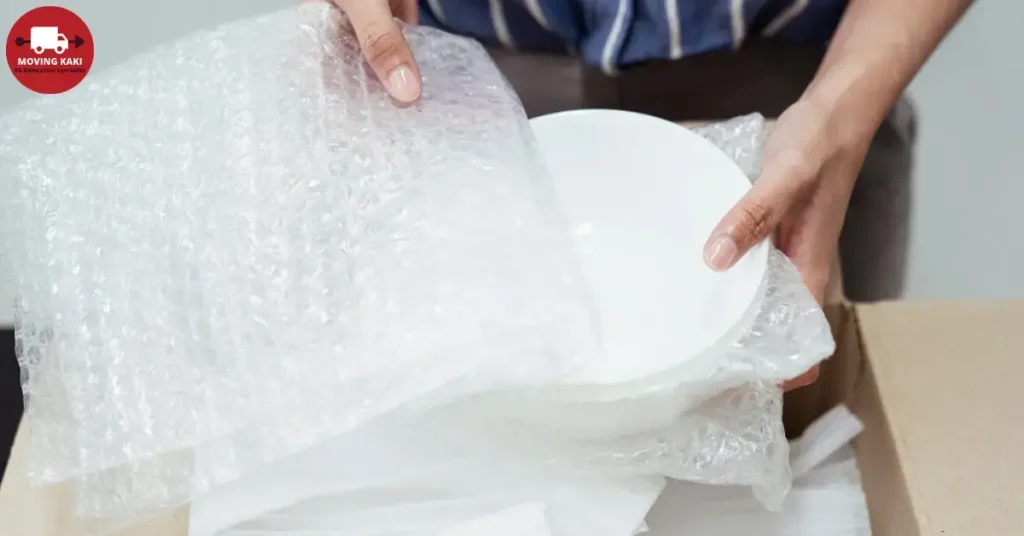
How To Pack Plates For Moving?
1- Gather the Packing Materials
To pack plates safely, you’ll need the right materials to provide good protection. The quality of packing supplies can make a significant difference in preventing damage. Here’s a detailed list of what you’ll need:
- Moving Boxes: Dish boxes or double-walled boxes work best because they are built to handle the weight of plates without collapsing. If possible, get boxes specifically designed for dishes, as they often come with partitions.
- Packing Paper or Bubble Wrap: These materials are ideal for wrapping plates individually to prevent scratching and breaking. Packing paper is more eco-friendly, while bubble wrap offers excellent cushioning. However, you can choose what is available to you.
- Packing Tape: Use a high-quality tape to secure the boxes and keep them intact. Weak tape can cause boxes to open during transit.
- Cardboard Dividers: If you don’t have special boxes for plates, you can easily use dividers. They can help to separate plates and reduce direct contact, which prevents cracks.
- Towels or Soft Cloths: These are used as a layer of shock absorption to provide extra safety for plates. They can give an extra cushioning effect at the bottom and top of the box.
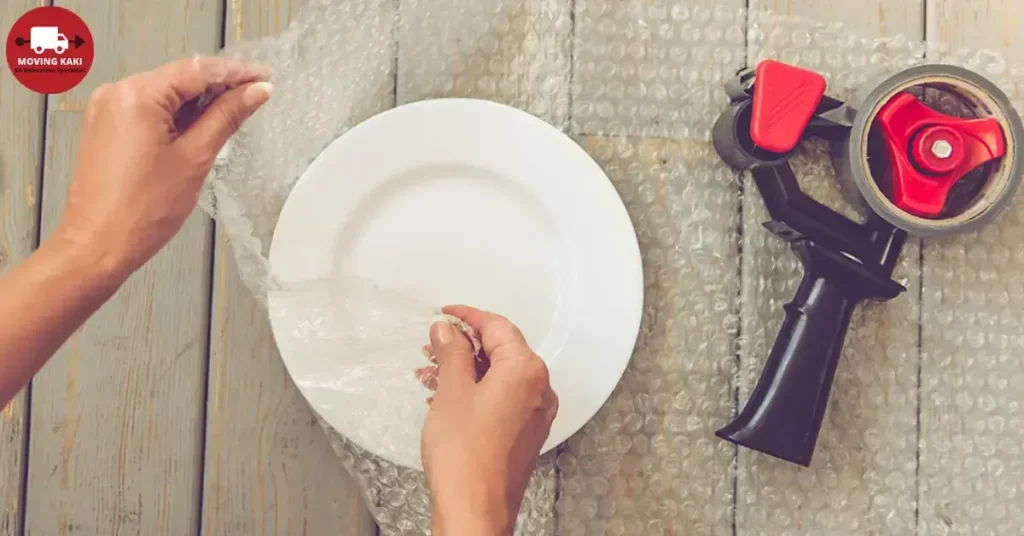
2- Prepare the Moving Box
Packing your plates the right way starts with preparing a strong, well-cushioned box. A properly prepared box provides a strong foundation and prevents your fragile dishes from getting damaged during the move. Here’s how you can do it:
Choose the Right Box
Pick a sturdy, medium-sized box, preferably one designed for moving fragile items. Avoid using oversized boxes, as they can become too heavy and increase the risk of breaking or dropping. If you have the original box in which your plates came.
Secure the Box for Extra Strength
Before packing, strengthen the box by applying extra packing tape along the bottom seams. Apply at least two or three layers of strong packing tape across the bottom to make sure it doesn’t break under the weight of the plates. You can also reinforce the corners with additional tape to prevent the box from bending or collapsing.
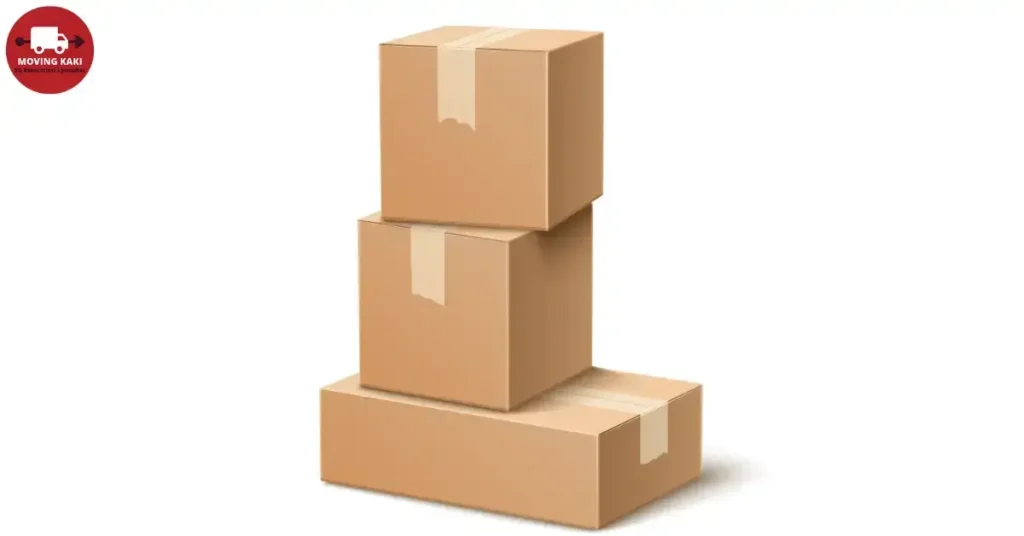
3- Wrap Plates Individually
When you are packing plates for moving, wrap each one individually to make sure they stay protected. Each plate should be treated with care to give maximum protection. Here’s how you can wrap plates properly:
- Place a sheet of packing paper or bubble wrap on a flat surface to create a smooth wrapping area.
- Place the plate in the centre of the wrapping material.
- Pull the edges of the packing material over the plate, and cover it from all sides.
- Secure the wrap with packing tape to keep it in place and prevent shifting during transport.
- For fragile or valuable plates, wrap them a second time for extra protection against cracks.
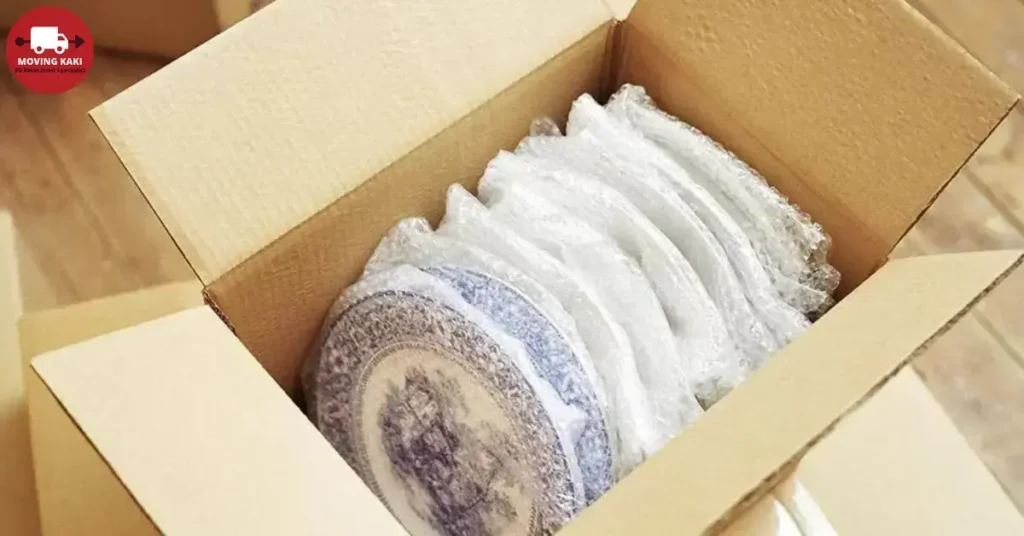
4- Arrange Plates Vertically, Not Flat
Stacking plates vertically is the most effective way to pack plates for moving, as it distributes weight more evenly and reduces the pressure on each plate.
Instead of placing them horizontally, put them on their edges inside the box, similar to how vinyl records are stored. Plates are stronger on their edges, making this method safer.
Make sure to keep the box manageable to avoid strain during lifting. A box that is too heavy increases the risk of being dropped and causes breakage.
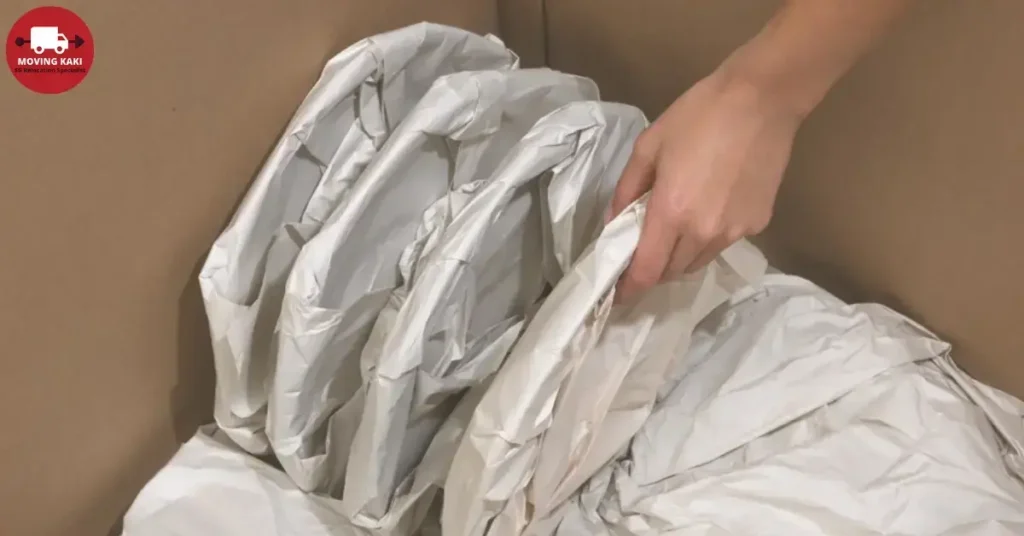
5- Fill Empty Spaces For Extra Protection
Once all plates are securely packed to move, check for any gaps or open spaces. These spaces can cause plates to shift during transport, increasing the risk of breakage. You can also use crumpled packing paper, towels, bubble wrap, or foam peanuts to fill these gaps.
Make sure the extra cushioning surrounds all sides of the plates, including the top and the spaces between them. This padding helps absorb shocks from bumps or sudden movements during transit.
Before applying the tape, gently shake it to see if anything inside moves. If you hear plates shifting or rattling, add more padding until everything remains securely in place. A well-packed box should have no movement inside.
6- Label the Box Properly
Clearly label the box with “FRAGILE – Plates” and “This Side Up” using a thick, bold marker. This will make the movers or anyone handling the box know that it contains items that require extra care.
Also, write the labels on at least two or three sides of the box, including the top. This makes the instructions visible from different angles, reducing the chances of the box being placed incorrectly.
And if you want extra visibility, you can also use bright red or orange “FRAGILE” stickers. These stickers add another layer of warning, making it even more transparent that the box requires gentle handling.
If you don’t want to pack on your own, you can hire professional packing services.
Tips for Plate Packing
- Don’t overpack a single box. Although it’s tempting, carrying too much weight can lead to accidents.
- Use your linens: Pillowcases, dish towels, or even socks make great cushioning for plates if you’re out of paper.
- Store dishes in cool, dry places if they’re going into storage. Moisture can cause damage over time.
- Wrap bowls inside each other with padding between them, then wrap the whole stack together. It saves space and keeps them safe.
- Layer towels at the top and bottom of each box for added protection.
Conclusion
Packing plates properly is essential to avoid damage during your move. Take your time, use soft and secure wrapping, and ensure that nothing can shift inside the box. Whether you’re heading across town or putting dishes into storage, a little planning goes a long way. With these simple plate packing tips, you’ll keep your kitchenware safe and ready to use in your new home.
For more expert moving and packing tips or to ensure a seamless relocation, contact our professional moving company for reliable assistance.
FAQs
How do I pack dishes for moving without using paper?
If you don’t want to use packing paper, you can safely wrap your dishes using clean T-shirts, kitchen towels, or any soft cloth. Wrap each plate individually and stack them vertically in the box, just like you would with paper. This method is not only eco-friendly but also offers great protection during the move.
What’s the best type of box for packing plates?
Dish boxes or double-walled boxes are the most protective, as they can handle the weight and provide better durability.
How do I pack plates if I don’t have bubble wrap?
You can use towels, soft cloths, or multiple layers of packing paper for insulation. These alternatives are the best and provide sufficient cushioning.
How do I pack expensive or antique plates safely?
It’s easy, just double wrap them, add extra padding, and consider carrying them separately or in your vehicle for maximum safety.
